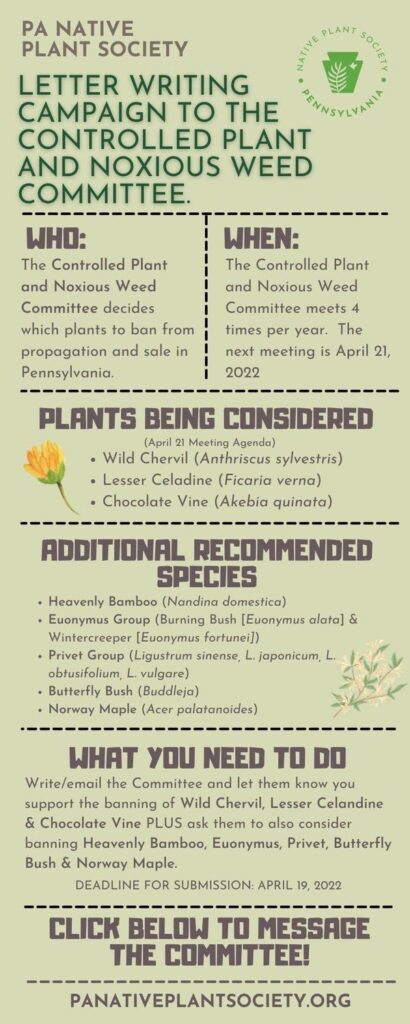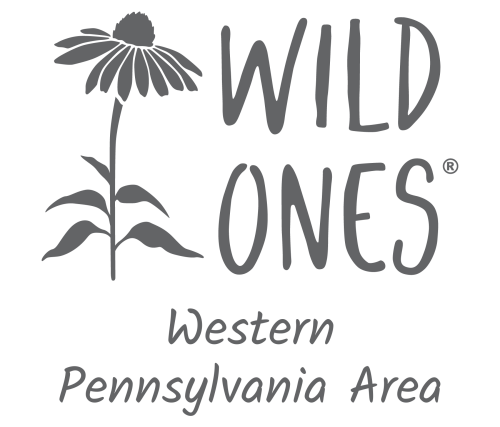
You can copy and paste the below letter and email to: [email protected]v
Subject Line: CPNWC Meeting comments
To Whom It May Concern:
WILD CHERVIL (Anthriscus sylvestris) LESSER CELANDINE (Ficaria verna)
CHOCOLATE VINE (Akebia quinata) In addition to these three species, I recommend the committee consider the following species as they are currently in the nursery trade across the state and doing harm to native wildlife:
HEAVENLY BAMBOO (Nandina domestica) – This ornamental produces berries that are attractive but highly toxic to birds, containing concentrations of hydrogen cyanide that have caused mass bird die-offs after ingestion.
EUONYMUS GROUP: Burning Bush and Wintercreeper – Burning Bush (Euonymus alata), known for its brilliant fall color, is spreading widely throughout fields edges and forest edges as birds distribute berries, crowding out native flora. The berries are also toxic to mammals, including pets, and to some birds. Wintercreeper (Euonymus fortunei) is a fast-growing groundcover that has escaped into the wilds, smothering native plants and emerging trees and shrubs.
PRIVET GROUP: Ligustrum sinense, L. japonicum, L. obtusifolium and L. vulgare – These ornamentals have escaped into the wilds, outcompeting native shrubs and at times completely dominating the understory in woods edge and stream edge environments
BUTTERFLY BUSH (Buddleja spp.) – This non-native ornamental has gained popularity for its colorful flowerheads which are highly attractive to butterflies. With over 40,000 seeds on a single flower spike, this shrub has been able to spread rapidly, taking over native fields, shrub, creekside, and woodland habitats. It does not provide habitat for butterfly caterpillars, as native flowering plants do, and its nectar has been found to be the “junk food” of nectar for butterflies, with little of the nutritional content that native plants provide necessary for preparation for winter.
NORWAY MAPLE (Acer platanoides) – This non-native ornamental tree canopy creates such dense shade that very little can grow beneath it to support diversity where it is planted. It is a prolific seeder, spreading into natural areas and shading out native plants and outcompeting native Sugar Maples. As a native plant enthusiast and advocate, I urge the Committee to take action now to protect our natural heritage! Thank you for your consideration.

